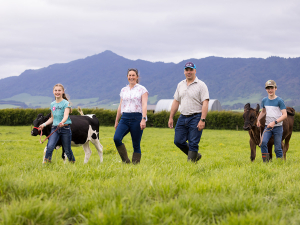When Wilfred Giltrap founded Giltrap Engineering in 1959, he laid the building blocks for a business that represents clever, durable and time-saving products with a loyal following in New Zealand and beyond.
The company says developing solutions that are constructed with attention to detail, a key principle of the business is listening to end users, to understand what works, what needs improvement and, also thinking about whether there is different way of doing things more efficiently.
In the case of farm trailers, Giltrap trailers range from 5 to 20 tonnes in a conventional format or 17 to 25 tonnes in their construction series. Following a common theme throughout, conventional units have a low deck height, a steep tipping angle to quickly discharge loads and a single ram to help resist body twisting, with 35mm, treated tongue and groove flooring for durability and an extended working life.
Following the policy of continual development and evolution, Fieldays at Mystery Creek will be the showcase for the release of the new Giltrap GT Series trailers.
Offered in 6, 8 and 10 tonne capacities, a larger deck size offers up to 15% more capacity than the previous models, newly designed side boards offer a slam shut and self-locking with new heavy-duty latches.
At the rear of the trailer, a new free standing tailgate system allows the sides to be removed separately, with the option of a side hinging tailgate as a bolt-on unit that can also be retro-fitted later without modification.
Additionally, a hydraulically released tailgate can be fitted as an option when new, or retro fitted as required. Up front, once again the headboard can be easily removed to deal with longer loads.
Ease of operation is ensured with a 54-degree tipping angle, achieved with 4-stage rams on the 6 and 8 tonne models, along with a 5-stage set-up on the 10 tonners.
Once again locally produced Giltrap trailers have raised the bar to levels that some imports fail to achieve, delivering over-engineered and tried and tested designs, meeting local conditions and supported at the end of the phone, building on the legacy that Wilfred set in stone over 65 years ago.



















